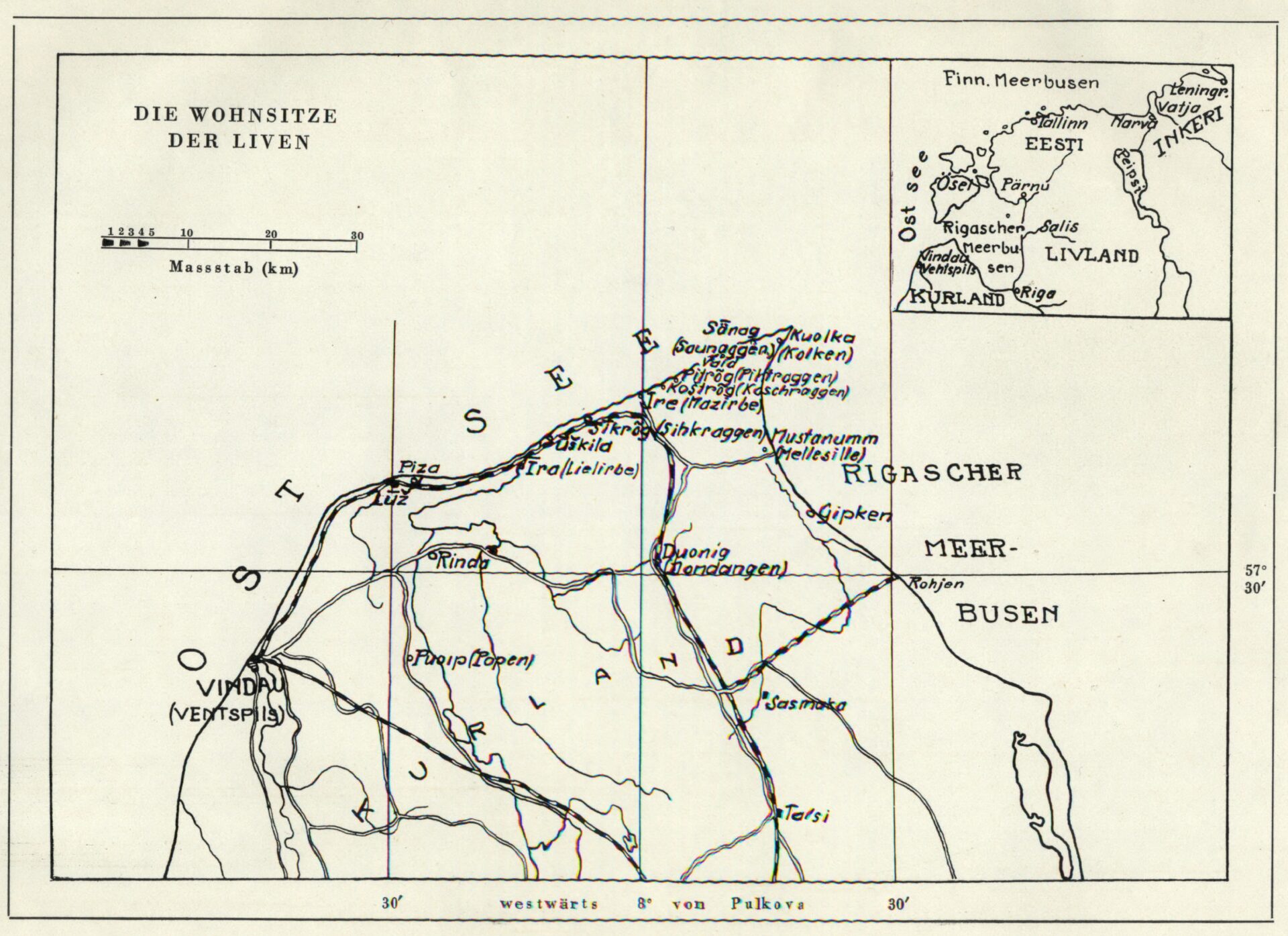
Livonian
Ī’žkillijid / Vowels
Livonian has 8 vowels, which can be short or long: a ä e i o ȯ õ u. Length is marked with a horizontal line over the letter. Eastern Livonian – on which the standard language is based – distinguishes mid-high ō and low ǭ (there is no short version of ǭ). The table below shows the vowels according to tongue position in the mouth: high, mid-high, and low. which can be pronounced in the front or back of the mouth.
| Tongue position | Front | Back |
|---|---|---|
| High | i kilā ’village’ ī sīlma ’eye’ | õ sõbrā ’friend’ u sukā ’sock’ ȭ vȭrõz ’foreign’ ū sū ’mouth’ |
| Mid-high | e dek ’blanket’ ē tēriņtš ’hello’ | ȯ vȯņ ’luck, fortune’ o sovā ’walking stick’ ȱ vȱlda ’to be’ ō kōvõd ’wells’ |
| Low | ä käbā ’pine cone’ ǟ pǟva ’day’ | a kalā ’fish’ ǭ mǭ ’earth, land’, rǭntõz ’book’ ā rānda ’shore’ |
Listen to Pētõr Damberg read the vowels below:
i e ä õ ȯ u o a
Low ǭ, e.g., in the word mǭ ’earth, land’, often is replaced by ā in Western and Central Livonian, e.g., mā ’earth, land’. High ō, on the other hand, occurs in all Livonian dialects and alternates with the diphthong ou, e.g., kouv ’well’ : kōvõd ’wells’, tōvaz ’sky; storm’ : touvõd ’skies; storms’. The standard spelling does not distinguish between the two o-sounds, but dictionaries and learning materials usually do make this distinction, which is why this is also done in this textbook (e.g., lōda ’table’, but tǭla ’table’).
All of the vowels given in the table can occur in the first syllable. By contrast, generally only a i u õ occur in non-initial syllables, e.g., vȱlda ’to be’, kațki ’broken’, tõurõz ’dear, expensive’. Foreign borrowings are an exception, e.g., fotō ’photo’. Of the long vowels, ā ē ī ū are possible in non-initial syllables, e.g., sidām ’heart’, kuŗē ’devil’, kadīz ’lost’, jänū ’thirst’; length is also marked on these vowels with a horizontal line above the letter.
The vowel õ occurs in all Southern Finnic languages, i.e., North Estonian, South Estonian, Votic, and Livonian. Livonian distinguishes two varieties of the vowel õ. The vowel written as õ is pronounced slightly higher than Estonian õ. The vowel ȯ, by contrast, is pronounced slightly lower than Estonian õ and occurs only word-initially after the consonants p m v, e.g., pȯis ’boy’, mȯizõ ’manor’, vȯigõ ’to swim’, vȱlda ’to be’.
Earlier, the vowels ö and ü occurred in native Livonian words, which today have been replaced by e and i. For example, in late 19th century and 20th century notes the word ‘sacred, holy’ occurs as püva/pyva, though later it is recorded as pivā.
Read about polyphthongs on the next page.


